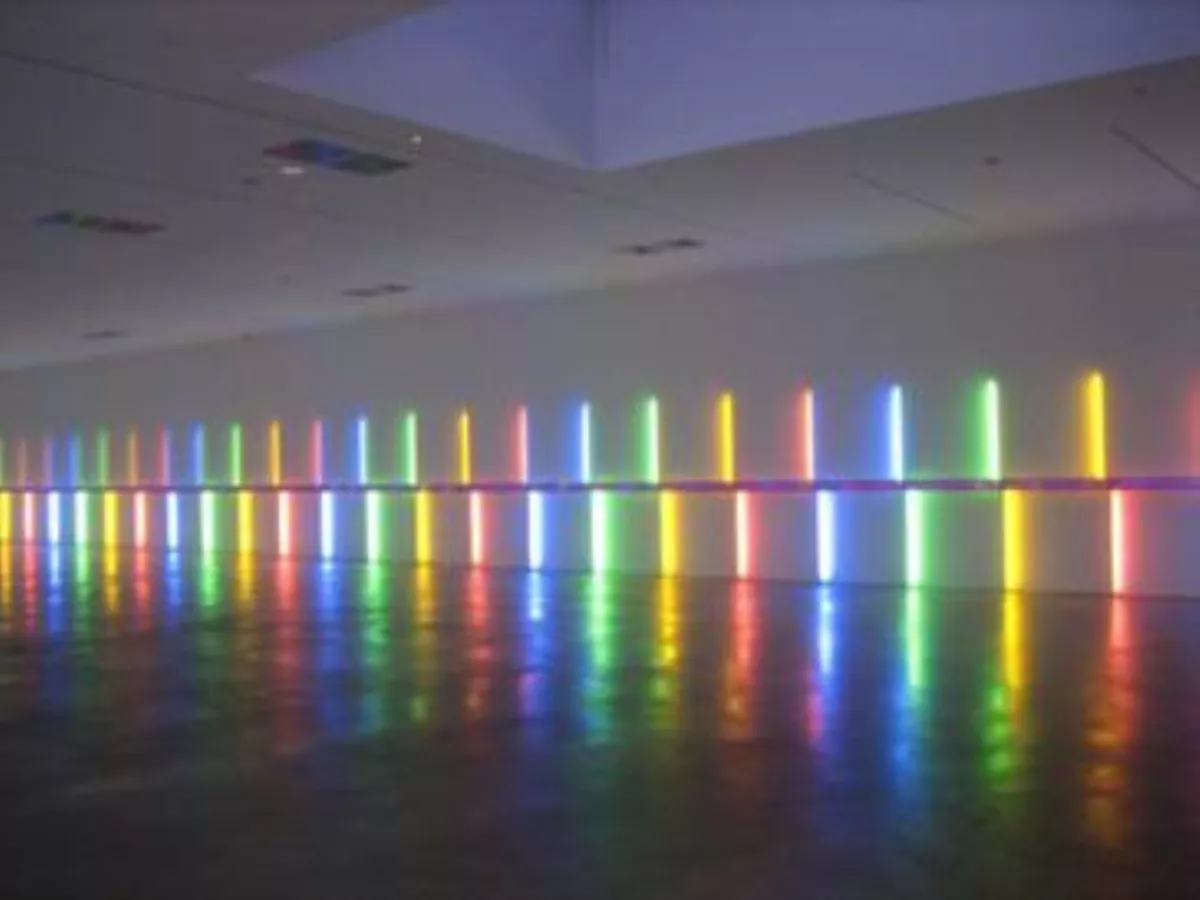 1.
1. Dan Flavin was an American minimalist artist famous for creating sculptural objects and installations from commercially available fluorescent light fixtures.

 1.
1. Dan Flavin was an American minimalist artist famous for creating sculptural objects and installations from commercially available fluorescent light fixtures.
Dan Flavin was named after his father, D Nicholas Flavin.
Dan Flavin studied for the priesthood at the Immaculate Conception Preparatory Seminary in Brooklyn between 1947 and 1952 before leaving to join his twin brother, David John Flavin, and enlist in the United States Air Force.
Dan Flavin later studied art history for a short time at the New School for Social Research, then moved on to Columbia University, where he studied painting and drawing.
From 1959, Dan Flavin was briefly employed as a mail room clerk at the Guggenheim Museum and later as guard and elevator operator at the Museum of Modern Art, where he met Sol LeWitt, Lucy Lippard, and Robert Ryman.
Dan Flavin married his second wife, the artist Tracy Harris, in a ceremony at the Guggenheim Museum, in 1992.
Dan Flavin died in Riverhead, New York, of complications from diabetes.
Dan Flavin confined himself to a limited palette and form.
Dan Flavin started to reject studio production in favor of site-specific "situations" or "proposals".
Dan Flavin realized his first full installation piece, greens crossing greens, for an exhibition at the Van Abbemuseum, Eindhoven, Netherlands, in 1966.
In 1968 the Heiner Friedrich Gallery in Munich exhibited the light installation "Two primary series and one secondary", presented in three exhibition rooms, which Dan Flavin developed especially for the gallery.
Dan Flavin himself examined the installation in Frankfurt in February 1993 and then adapted his installation concept for the museum.
In subsequent barred corridors, Dan Flavin would introduce regular spacing between the individual fixtures, thereby increasing the visibility of the light and allowing the colors to mix.
Dan Flavin generally conceived his sculptures in editions of three or five, but would wait to create individual works until they had been sold to avoid unnecessary production and storage costs.
Dan Flavin's last artwork was a site-specific work at Santa Maria Annunciata in Chiesa Rossa, Milan.
The Menil Collection in Houston, Texas states that in 1990 Dominique de Menil approached Dan Flavin to create a permanent, site-specific installation at Richmond Hall.
Two days before his death in November 1996 Dan Flavin completed the design for the space.
Dan Flavin created small portraits and kept about 20 volumes of journals.
Dan Flavin collected drawings too, including works by Hudson River School artists like John Frederick Kensett, Jasper Francis Cropsey, and Sanford Robinson Gifford, along with examples of works on paper by early-19th-century Japanese artists like Hokusai and 20th-century European masters like Piet Mondrian and George Grosz.
Dan Flavin exchanged works with Minimalist colleagues like Donald Judd and Sol LeWitt.
The first major retrospective of Dan Flavin's work was organized by Brydon Smith at the National Gallery of Canada, Ottawa in 1969.
In 1964, Dan Flavin received an award from the William and Norma Copley Foundation, Chicago, with a recommendation from Marcel Duchamp.
Dan Flavin worked closely with architect Richard Gluckman and Jim Schaeufele, Dia's director of operations, on the renovation and design.
Each of the more than 750 light sculptures that Dan Flavin designed - usually in editions of three or five - were listed on index cards and filed away.